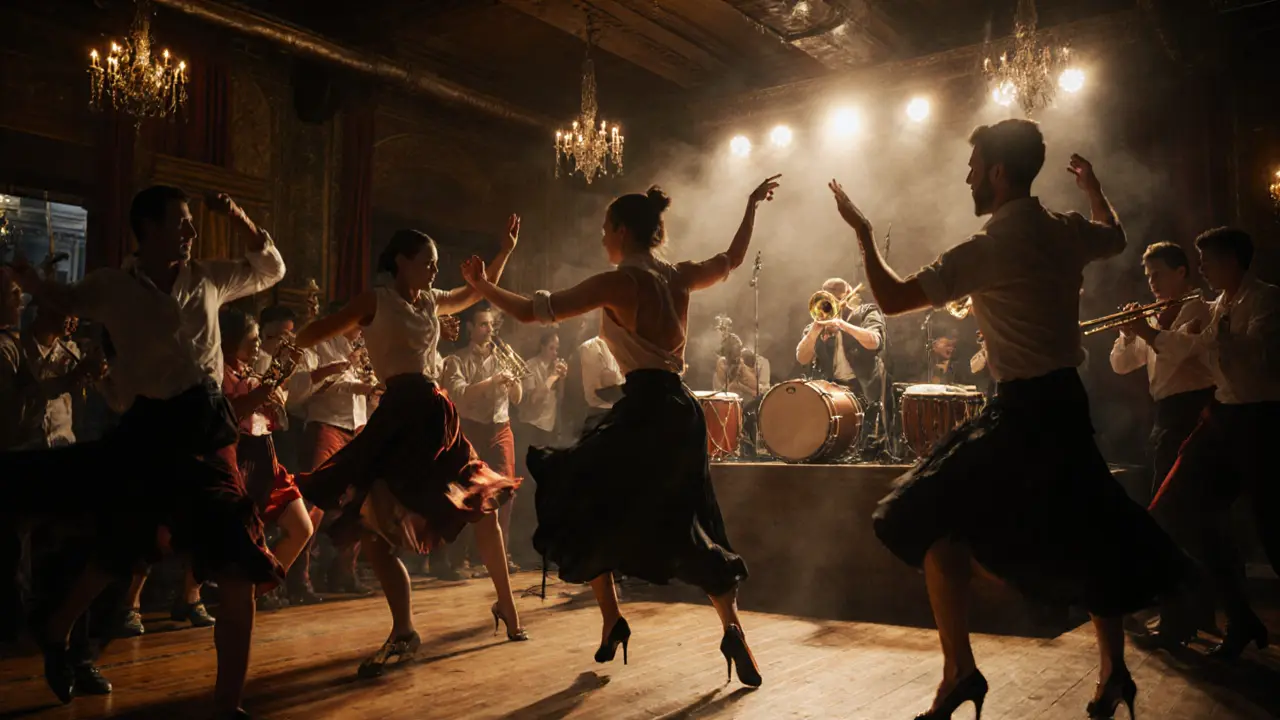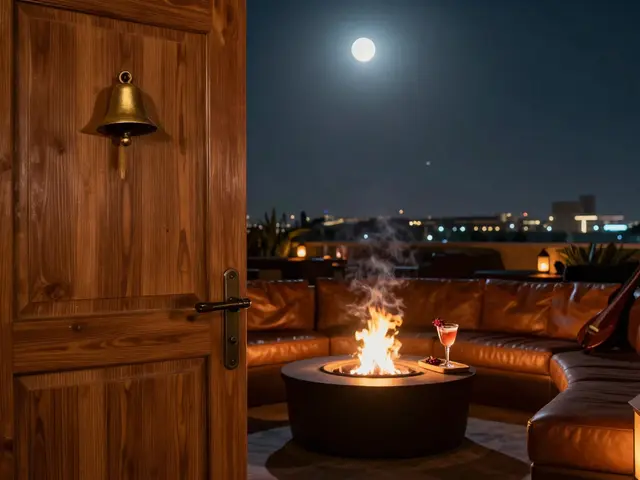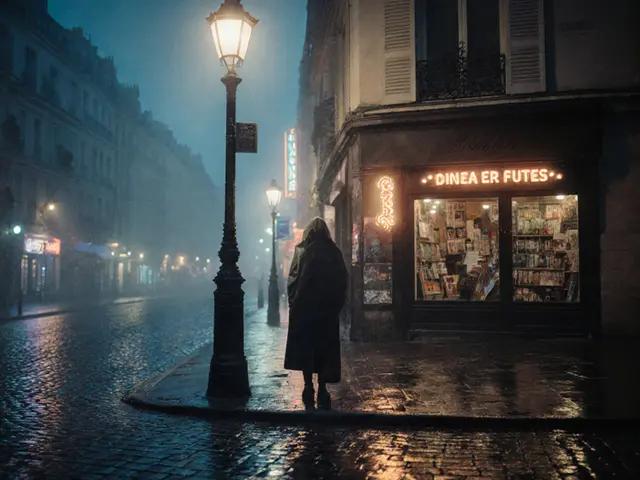Best Dance Spots for Salsa and Latin Nightlife in Paris
Paris isn’t just about croissants and the Eiffel Tower-it’s got a pulse that kicks into high gear after dark when the drums start rolling and the horns blare. If you’re looking for real salsa and Latin nightlife in Paris, you won’t find it in tourist traps or hotel lounges. You’ll find it in basement clubs, tucked-away courtyards, and crowded dance floors where the air smells like sweat, rum, and passion. This isn’t about watching. It’s about joining.
La Cigale: Where the Rhythm Never Sleeps
La Cigale isn’t just a venue-it’s a landmark. Open since 1887, this historic music hall on Rue de La Chapelle now hosts Latin nights every Thursday and Saturday. The space is large, with high ceilings and a sprung wooden floor that’s perfect for spinning. The crowd? Mix of locals, expats, and travelers who’ve heard the rumors. The music? Live bands, not DJs. Expect trombones that shake your ribs and congas that pull your feet to the floor. They bring in bands from Colombia, Cuba, and Puerto Rico regularly. No cover on Thursdays. Saturdays, it’s 10 euros, but you get two drinks included. The dance floor fills by 11 p.m. and stays packed until 3 a.m. If you’ve never danced salsa in a room full of people who’ve been doing it for 20 years, this is where you start.
El Tumbao: The Hidden Gem in the 11th
Tucked behind a nondescript door near Place de la République, El Tumbao feels like you’ve stumbled into a Havana backyard. The walls are painted deep red, string lights hang low, and the bar serves rum cocktails made with fresh lime and cane sugar. They don’t advertise. You find it because someone told you. Or because you followed the bassline. Their Latin night is every Friday. The DJ plays a mix of classic salsa dura, timba, and modern Latin jazz. The dance floor is small, so you learn to move close. There’s no lesson before the music starts-just a few regulars showing newcomers the steps. You’ll see women in heels spinning under low lights, men with shirts rolled up, and couples who’ve been dancing together since 2010. Bring cash. No card machine. And don’t be shy. The first person who asks you to dance? They’re not being polite. They’re inviting you home.
Le Balajo: Old School, Full Heart
Le Balajo in the 13th arrondissement has been a Parisian dance institution since 1935. It’s not fancy. The floors are worn, the mirrors are cracked, and the air smells like decades of cigar smoke and perfume. But here’s the truth: this is where real salsa lives in Paris. Every Wednesday and Saturday, they host salsa nights with live musicians from Senegal, Venezuela, and the Dominican Republic. The crowd is mostly French locals-teachers, nurses, retirees-who’ve been coming for 30 years. They don’t care if you’re new. They’ll correct your footwork, laugh when you step on toes, and clap when you finally nail the cross-body lead. The music starts at 10 p.m., and by midnight, the room is so hot you could fry an egg on the floor. They close at 2 a.m. sharp. No exceptions. No VIP section. No pretense. Just music, movement, and memory.

La Bellevilloise: The Modern Pulse
If you like your Latin nights with a side of indie edge, La Bellevilloise in the 20th is your spot. It’s a converted wine warehouse with exposed brick, a big outdoor terrace, and a sound system that makes your chest vibrate. Their Latin nights happen on the last Saturday of every month. The vibe? More festival than club. They bring in DJs from Mexico City, Bogotá, and Marseille who blend salsa with reggaeton, Afro-Cuban beats, and electronic bass. The crowd is younger-students, artists, digital nomads. You’ll see people dancing salsa one minute, then breaking into reggaeton the next. The drinks are pricey, but the energy is worth it. Arrive before 11 p.m. or wait 45 minutes to get in. The dance floor is wide open, and the lighting shifts with the music-red when it’s slow, strobe when it’s fast. This isn’t the place to learn the basics. It’s the place to lose yourself in the rhythm.
La Cigale’s Sunday Salsa Brunch: A Different Kind of Night
Not everyone wants to dance until dawn. If you’d rather sip coffee and move slowly, La Cigale offers a Sunday salsa brunch from 12 p.m. to 4 p.m. It’s the same space, but softer. Live piano and violin play salsa classics. A few couples dance in the center. Others sit at tables with croissants and cafés au lait. It’s the perfect way to ease into Latin culture without the exhaustion. The instructors give free 30-minute lessons at 1 p.m. and 3 p.m. No experience needed. Just show up. You’ll leave with a full stomach, a smile, and maybe a new friend.
What to Wear, What to Bring
You don’t need fancy clothes. But you do need the right shoes. Leather-soled dance shoes are ideal-loose enough to turn, grippy enough to stop. Sneakers? Avoid them. They stick. Flip-flops? Don’t even think about it. Women: wear heels with ankle support. Men: skip the loafers. Bring a light jacket. Even in summer, these places get chilly after midnight. Bring cash. Many spots don’t take cards. And bring your confidence. No one cares if you’re bad. They care if you’re willing to try.

When to Go and How to Stay Safe
Most Latin nights start around 10 p.m. and run until 2-3 a.m. The best time to arrive? Between 10:30 and 11:30 p.m. That’s when the crowd is full, the music is pumping, and the energy peaks. Avoid going alone after midnight. Stick to well-lit streets. The 11th and 20th arrondissements are safe, but avoid walking alone through the 18th after 1 a.m. Take a taxi or use Bolt or Uber. Most clubs are within walking distance of Métro lines 2, 5, and 11. Check the club’s Instagram page before you go-many post set times and guest artists there.
Why Paris? Why Now?
Paris has had Latin music for decades, but since 2020, the scene has exploded. More Cubans, Colombians, and Puerto Ricans have moved here for work and school. They brought their music, their dance schools, and their parties. Now, you can find salsa classes in every arrondissement. You can find live bands on weekends. You can find people who’ve danced with Celia Cruz’s band or taught in Cali’s famous clubs. This isn’t a tourist gimmick. It’s a living culture. And it’s growing. If you want to feel what Latin nightlife really sounds like-not the sanitized version you hear on playlists-but the raw, sweaty, joyful truth-you’ll find it here.
Do I need to know how to dance salsa to go out?
No. Most places welcome beginners. At El Tumbao and La Cigale, regulars often invite newcomers to dance. If you’re unsure, show up to the Sunday brunch at La Cigale-they offer free beginner lessons. The key isn’t skill. It’s willingness to move.
Are these places expensive?
Not really. Cover charges range from free to 12 euros. Drinks cost 8-12 euros. La Bellevilloise is pricier, but you’re paying for the vibe and sound. Most clubs have happy hours before 11 p.m. with discounted rum cocktails. You can enjoy the night without spending more than 30 euros.
Is there a dress code?
No strict dress code. But people dress to move. Women wear dresses, skirts, or pants with some give. Men wear button-downs or casual shirts. Avoid heavy jackets, boots, or flip-flops. Comfort and mobility matter more than style.
Can I take a salsa class before going out?
Yes. Studios like Danza Latina in the 10th and Salsa Paris in the 11th offer drop-in classes for 15 euros. Most run Monday to Thursday evenings. A 90-minute class will give you enough basics to feel confident on the floor. Try one before your first night out.
Are these spots LGBTQ+ friendly?
Absolutely. The Latin dance scene in Paris is one of the most inclusive in Europe. Same-sex couples dance openly. Many clubs host special LGBTQ+ salsa nights. You’ll see dancers of all genders, orientations, and backgrounds. The only rule? Respect the rhythm and the person you’re dancing with.
Next Steps: Where to Go After This
Once you’ve danced at these spots, you’ll want more. Check out the monthly Paris Salsa Festival in June-live bands, workshops, and outdoor parties across the city. Join the Facebook group "Salsa Paris Community" for event alerts. Or take a weekend trip to Lyon or Marseille-they’ve got thriving scenes too. But start here. Paris isn’t just a city with salsa. It’s a city that dances salsa. And you’re invited.





